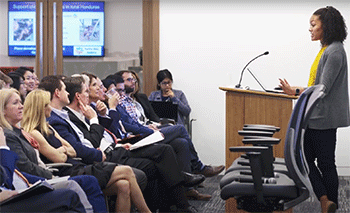
” Even at the schools that accepted African Americans, there was often an animosity felt toward them by white students and faculty. “ew other Northern colleges enrolled non-white students until this century. Bowdoin College had only one African American graduate before 1864 and a handful of black students in its medical school. Middlebury was the first college to graduate an African American in 1823. To present this argument, I will first give a brief description of the atmosphere regarding higher education for African American students in the antebellum era, then I will describe the atmosphere into which the first African Americans at Bates were entering, and finally, I will look in depth at the individual experiences of the first three African American graduates of Bates College.Īt the time that Bates was founded, only a handful of colleges in the United States were accepting African American students, and at these schools African Americans were often not seen as equals. Using these sources, this chapter will argue that Bates was generally supportive, albeit often paternalistic, in its attitude toward its minority students from 1855 to 1877. To understand the attitudes of these individuals, this chapter will utilize evidence from faculty and student diaries, the Bates Student and Seminary Advocate, the Bates Bulletin and other official sources that hint at early race relations at Bates College. This chapter will analyze how Bates’ white students, white faculty, and black students viewed race relations on the campus. Yet the degree to which the Bates community actually accepted African Americans (and all non-whites) as equals at the College needs to be further examined. Bates’ faculty held relatively progressive stances in regard to immediatist abolitionism and, to a lesser extent, racial equality. Shortly after Bates College was founded, students at nearby colleges allegedly declared that it was a so-called “school for niggers and women.” This insulting and contemptuous claim was of course meant to deride the young College, yet Bates’ legendary egalitarianism later served as a source of pride and strength for the College community. John Baldacci’s “Bates College Day” proclamationĬhapter 2: Race Relations on the Bates Campus Joint resolution passed by the Maine Legislature.

December 1941: America enters World War II.December 1946: A bowl bid for Bobcat football.

#Bates white series
November 1956: A State Series victory for football.John Tagliabue: ‘Notes from a November-December Journal, 1963’.Sports column: ‘The sudden death of President Kennedy’.‘Impressions upon the news of President Kennedy’s death’.‘Minister doesn’t find assassination bizarre’.October 1969: Muskie ’36 speaks at the Bates Moratorium.September 1857: The Maine State Seminary opens.September 1973: A new library for Bates.August 1957: The dismantling of Sampsonville.August 1995: A tragic death, a hopeful legacy.July 1998: The Lake Andrews restoration.June 1914: The first Reunion Alumni Parade.June 1993: ‘College Bowl’ champs reunite at Reunion.Photo: Mays delivers eulogy at Morehouse.April 1968: Benjamin Mays ’20 delivers final eulogy for the Rev.February 1983: The final episode of “M*A*S*H”.January 1920: The Outing Club’s winter birth.January 1958: The Winter Carnival torch tradition.Euterpe Boukis Dukakis, Class of 1925 - An Immigrant’s Story.Faith by Their Works: Our Progressive Tradition.150 Years In 2005, Bates celebrated its sesquicentennial, honoring its 150-year history Page Menu


 0 kommentar(er)
0 kommentar(er)
